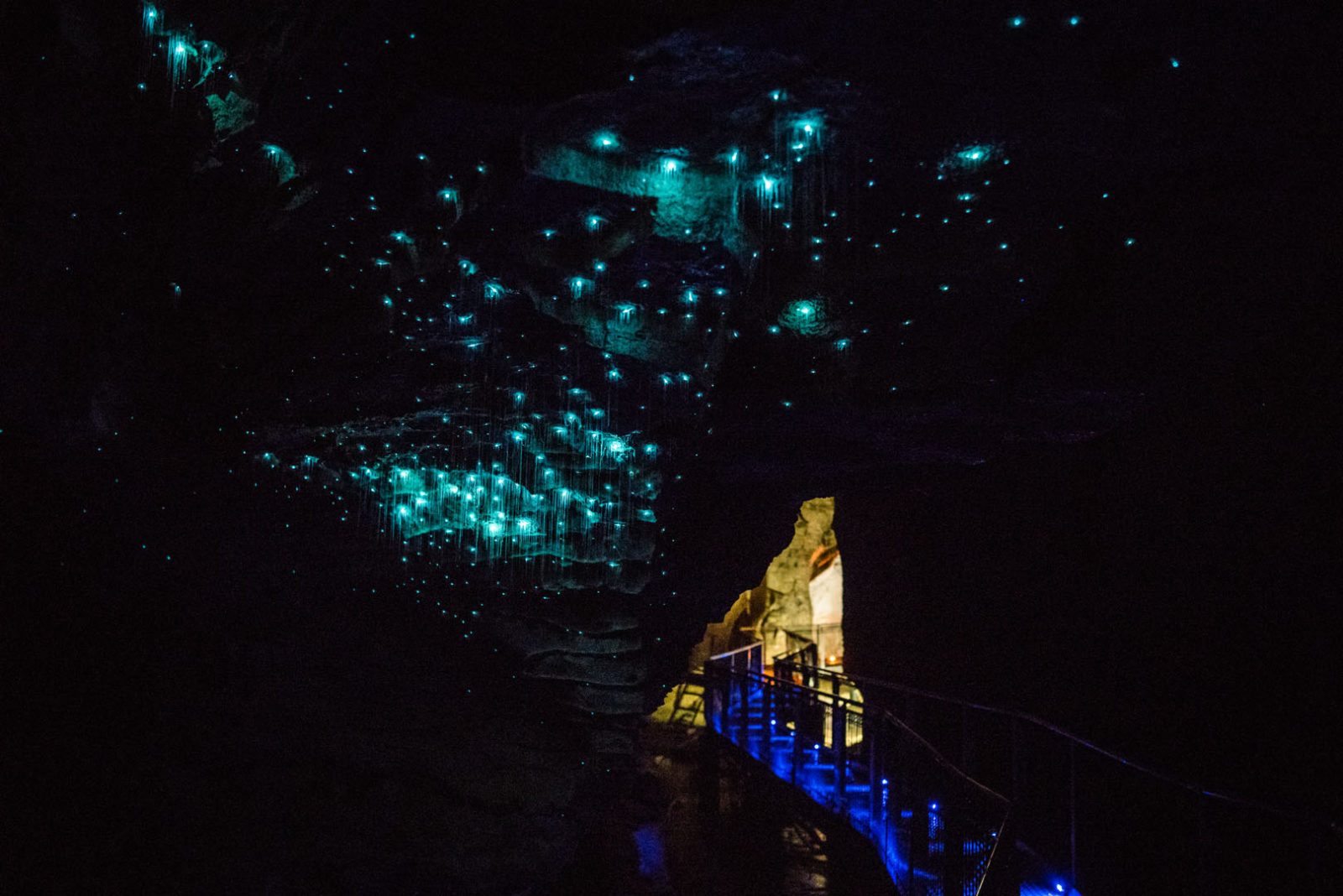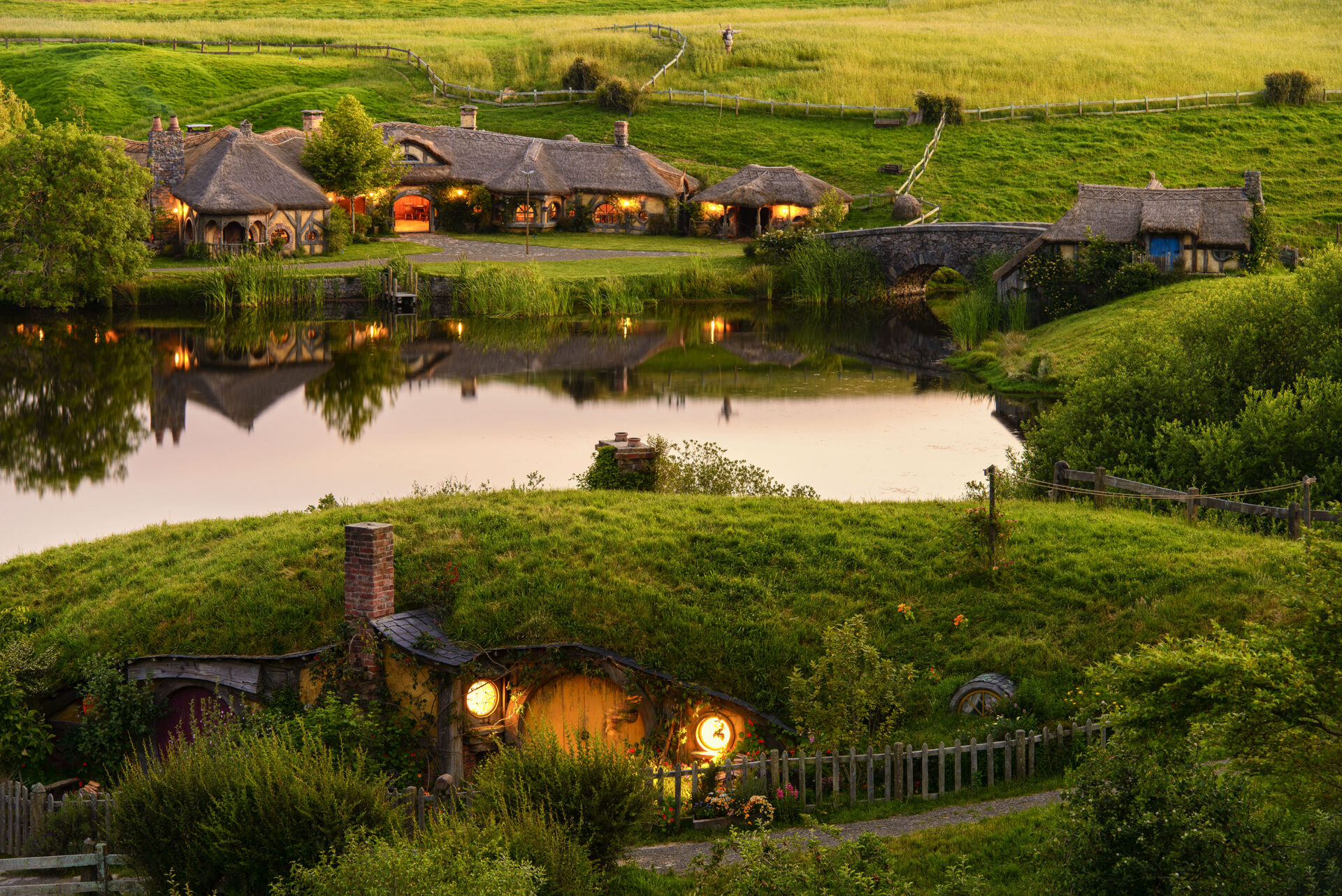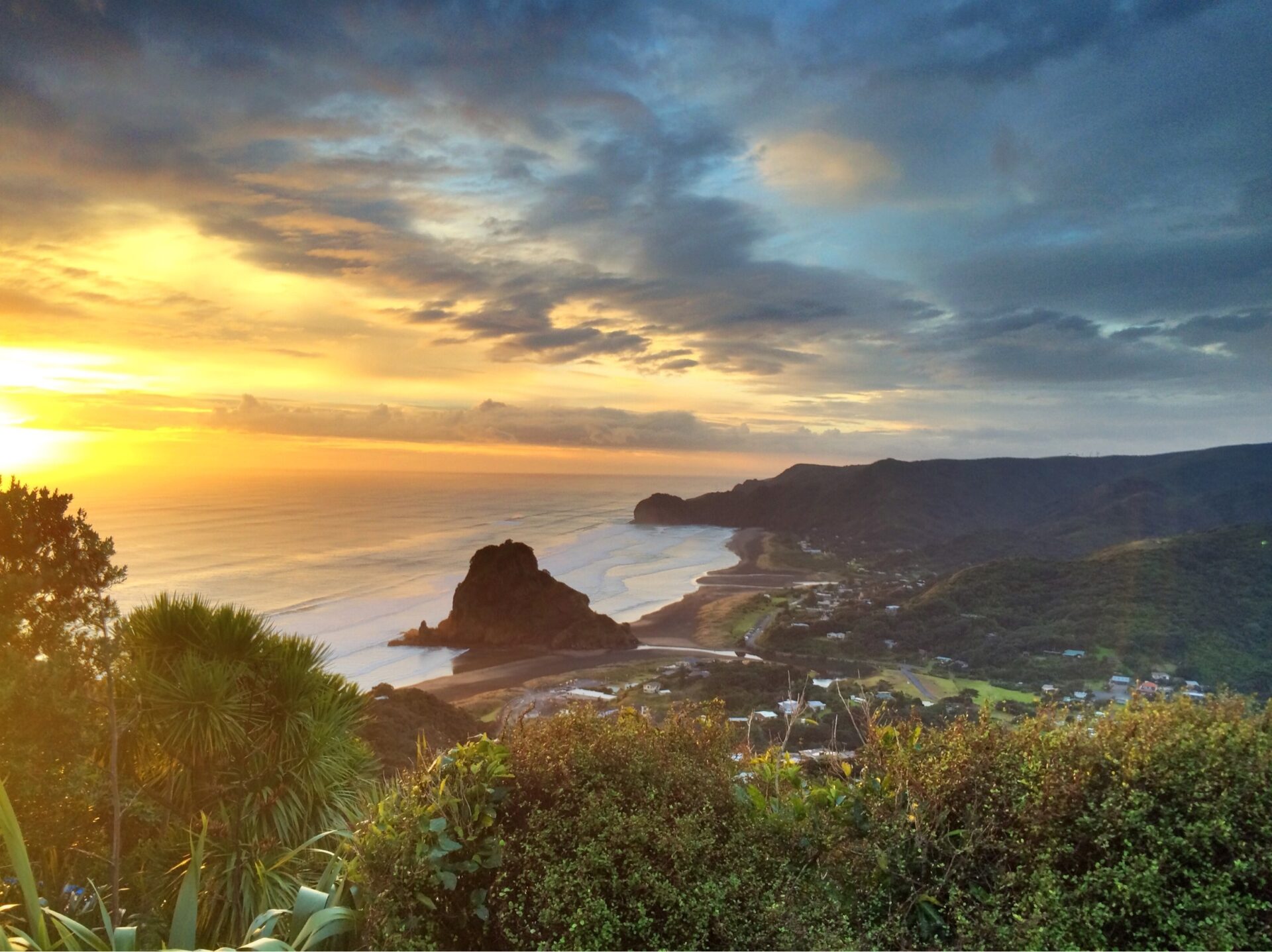
The Waitomo Glowworm Caves are one of New Zealand’s most enchanting natural attractions. Located on the North Island, these caves are famous for their mesmerizing glow worms that light up the dark caverns, creating a magical, starry-sky effect. This guide covers fascinating facts about the Waitomo Glowworm Caves, including their history, unique features, and what to expect during your visit. Enhance your experience by booking a day tour with Auckland & Beyond Tours, ensuring a seamless and informative trip to these captivating caves.
Location
The Waitomo Glowworm Caves are situated in the Waitomo District on New Zealand’s North Island, approximately 200 kilometers south of Auckland. This area is renowned for its rich network of subterranean caves and underground rivers, making it a prime location for exploring unique geological formations and experiencing the stunning bioluminescent spectacle of glowworms.
The caves are nestled in a picturesque landscape of rolling hills and lush greenery, creating a tranquil setting that enhances the magical atmosphere of the cave tours. The surrounding region also features diverse outdoor activities, from scenic walks to adventure sports, providing a well-rounded experience for visitors.
Getting There: To reach the Waitomo Glowworm Caves, travelers can drive from Auckland, which takes about 2.5 hours. Alternatively, there are bus services and guided tours available that offer transportation from major cities. For a more tailored experience, consider booking a glowworm cave day tour with Auckland & Beyond Tours, which provides convenient transport and expert guides for a seamless journey to the caves.
Discovery and Exploration
The Waitomo Glowworm Caves were first explored in the late 19th century by local Maori Chief Tane Tinorau and English surveyor Fred Mace. They used a raft made of flax stems to navigate the underground river and discovered the glowworm grotto. By 1889, the caves were opened to the public for guided tours.
Cultural Significance
The name “Waitomo” comes from the Maori words “wai” (water) and “tomo” (hole), reflecting the cave’s formation by underground streams. The caves are culturally important to the Maori people, who have been their traditional guardians for generations. The Maori community continues to play a key role in the caves’ conservation and management.
The Glowworms
The glowworms produce light through a chemical reaction in their bodies, involving the enzyme luciferase. This bioluminescence is used to lure insects into their sticky silk threads(fishing lines), providing a steady food source in the cave’s darkness. The light creates a surreal, starry effect on the cave ceilings, captivating visitors. Join us to learn more about these fascinating creatures and see them up close.
Geological Formations
Stalactites and Stalagmites
The Waitomo Caves feature stunning stalactites and stalagmites, formed over thousands of years from mineral deposits left by dripping water. Stalactites hang from the ceiling, while stalagmites rise from the ground, and occasionally, these formations meet to form pillars.
The caves are made of limestone, formed from the remains of marine organisms deposited over millions of years. Water erosion has shaped the Waitomo region’s limestone landscape, creating an extensive network of caves, sinkholes, and underground rivers to explore.
Tour Experience
Boat Ride Through the Glowworm Grotto
A highlight of visiting the Waitomo Caves is the boat ride through the Glowworm Grotto. In the silent darkness, guides navigate boats along the underground river, allowing visitors to gaze up at the shimmering glow worms overhead. This serene experience feels like drifting under a sky full of stars.
Guided Walking Tours
Guided walking tours take visitors through other parts of the cave system. Knowledgeable guides share insights into the cave’s history, geology, and the fascinating life cycle of the glowworms. These tours offer a closer look at the intricate rock formations and cave decorations.
Ecological Importance
Cave Conservation
Conservation efforts are crucial to protect the delicate ecosystem of the Waitomo Caves. Tour operators follow strict guidelines to minimize human impact on the environment. Measures include limiting the number of visitors, controlling light exposure, and monitoring cave conditions to preserve the habitat for glowworms and other cave-dwelling species.
Habitat Protection
Preserving the natural habitat in and around the Waitomo Caves is vital for maintaining biodiversity. Efforts are made to protect the surrounding forests and waterways, ensuring the sustainability of the cave’s unique ecosystem.
Interesting Facts
Historical Significance
The Waitomo Glowworm Caves were discovered in 1887 by Maori Chief Tane Tinorau and English surveyor Fred Mace. They initially explored the caves using a raft made from flax stems. The caves were officially opened to the public in 1889, becoming one of New Zealand’s earliest and most popular tourist attractions. The rich history of the caves is reflected in the well-preserved guides and historical accounts available during tours.
Unique Species
The glowworms that illuminate the Waitomo Caves are Arachnocampa luminosa, a species found exclusively in New Zealand. These bioluminescent larvae create a mesmerizing display of blue-green light, which is essential for attracting their prey in the pitch-dark environment of the caves. This unique species plays a crucial role in the local ecosystem and contributes to the caves’ global fame.
Natural Light Show
The glowworm grotto within the caves is often compared to a natural planetarium. The thousands of glowworms suspended in the cave’s darkness create a stunning visual effect, resembling a starry sky. In Maori glow worms are called “Titiwai” which roughly translates to the reflection of stars over water. This natural light show is not only a highlight of the cave visit but also a significant draw for photographers and nature enthusiasts.
Ancient Origins
The limestone formations within the Waitomo Caves are over 30 million years old. Formed from marine organisms and compressed over millions of years, the caves’ intricate network of stalactites, stalagmites, and other formations offer a glimpse into Earth’s geological history. The ongoing erosion and deposition continue to shape the cave’s features, providing a dynamic and ever-changing landscape.
Sustainable Tourism
Efforts to maintain the caves’ delicate environment are a priority for tour operators. The caves’ tourism practices are designed to minimize impact and ensure sustainability. Measures include regulating visitor numbers, limiting light exposure, and employing eco-friendly practices to protect the glowworms and preserve the cave’s natural beauty for future generations.
Travel Tips for Visiting
Best Time to Visit
The Waitomo Glowworm Caves can be visited year-round. However, the best time to visit is during the shoulder seasons (spring and autumn) when the weather is mild, and the crowds are smaller. Early morning tours often provide a more serene experience.
What to Bring
- Comfortable Walking Shoes: Essential for the walking tours inside the caves.
- Warm Clothing: The caves can be cool, so bring a jacket or sweater.
- Camera: Photography is allowed in certain parts of the caves, but flash photography is prohibited to protect the glowworms.
- Respectful Attitude: Follow all guidelines provided by the guides to help preserve the cave environment.
Conclusion
The Waitomo Glowworm Caves offer a magical and unforgettable experience, combining natural beauty with fascinating biological and geological features. Whether you are captivated by the shimmering glowworms, the stunning limestone formations, or the rich cultural history, a visit to these caves is a highlight of any trip to New Zealand. Plan your visit with Auckland & Beyond Tours, and immerse yourself in the enchanting world of the Waitomo Glowworm Caves through their expertly guided day tours, private tours, or customized multi-day adventures.
FAQs
How long does a tour of the Waitomo Glowworm Caves take?
A typical tour lasts about 45 minutes to an hour, including the boat ride through the Glowworm Grotto and the guided walking tour.
Can you take photos inside the Waitomo Caves?
Photography is allowed in some areas of the caves, but flash photography is prohibited to protect the glowworms. It’s best to check with your tour guide for specific guidelines.
Are the Waitomo Caves suitable for children?
Yes, the caves are suitable for children, and the tours are family-friendly. However, parents should ensure their children follow the safety guidelines provided by the guides.
Is the Waitomo Caves tour accessible for people with mobility issues?
The cave tours involve some walking and stairs, which may be challenging for individuals with mobility issues. It’s recommended to contact the tour operators in advance to discuss accessibility options.
What other attractions are near the Waitomo Caves?
Nearby attractions include the Ruakuri Cave, Aranui Cave, and the Lost World Cave. The Waitomo area also offers various outdoor activities such as black water rafting, hiking, and exploring local wildlife reserves. Auckland & Beyond Tourscan help you plan a comprehensive itinerary to explore these additional attractions.
Does Auckland & Beyond Tours offer packages that include the Waitomo Glowworm Caves?
Yes, Auckland & Beyond Tours offers both day tours and multi-day tour packages that include visits to the Waitomo Glowworm Caves. These tours are designed to provide a comprehensive and convenient experience, ensuring you see all the highlights.










